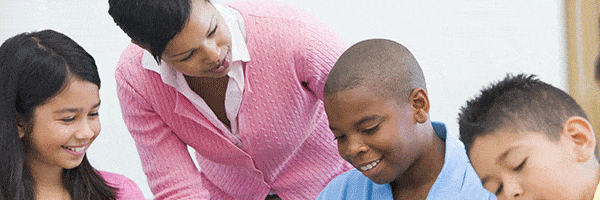
Teaching and learning has been transformed this year by various models of hybrid, virtual, and remote learning. Along with restructuring and modifying how they deliver education to students, the coronavirus pandemic has prompted educators at every grade level to rethink the role of discipline – the purpose, the structure, and the strategies used. Teachers find themselves confronted with potential discipline scenarios never encountered before: a student refuses to turn on their camera for distance learning after missing deadlines for electronic work assignments; or, a student arrives for an in-person school day not wearing a mask properly. What might be a logical consequence for any of these rule-breaking behaviors? How can we ensure the consequence does not inadvertently feel punitive, embarrassing, or demoralizing for the student?
A timelessly effective solution is to reframe your approach to discipline to come from a place of compassion. The definition of compassion, according to the Merriam-Webster Dictionary, is the “sympathetic consciousness of others’ distress together with a desire to alleviate it.” That sounds exactly like what students need right now. They need the adults at school to understand their anxiety, hardships, and struggles and find ways to address those needs first. Following are some concrete steps you can take to ensure a compassionate approach to discipline in your classroom, regardless of setting.
Create guidelines with students that strive to meet individuals’ needs while creating consistency and safety for the community. Use guidelines proactively to clarify expectations and help students prepare for what’s ahead. Then, guide learners in envisioning and practicing specific strategies that will support their immediate success. For example:
One of our guidelines says “We will respect one another”. In a moment you’ll work with a new partner in breakout rooms. Let’s take a moment to brainstorm ways we can show respect to new partners. What might respect look, sound, or feel like in this context?
Guidelines for behavior also need to be flexible so that students who are struggling can be given the time and space to follow them. Teachers can help students contextualize missteps by reminding everyone that mistakes are central to learning and not something to be afraid of or embarrassed about. They can assure students that rules will occasionally be broken and clarify their role in helping everyone learn and grow when this happens. Teachers can create a sense of safety and predictability by letting students know upfront how they will respond to misbehavior and clarifying how the strategies serve to help everyone learn from mistakes.
Here are a couple responses you can use when a student is struggling to meet expectations:
All behavior is communication, and rule-breaking or off-task behavior can give teachers information about the mental and physical health of their students. Compassionate discipline requires educators to begin by asking themselves some questions:
Let the answers to these questions guide your next steps in addressing the behavior. In some cases, the answers offer immediate clarity and provide direction for how to adjust or reteach expectations. In other cases, they may lead you to seek more information before taking any action.
Before responding, stay curious. Take steps to learn more about what’s happening from the child’s point of view. One way to do this is to ask some open-ended questions before initiating a consequence. Open-ended questions have no right or wrong answer and instead invite any reasoned or relevant response. Asking open-ended questions helps students share their perspectives and feelings and helps teachers better understand how to support them in the future. For example:
Teachers often use problem-solving strategies after they’ve tried other interventions, such as consequences, without a lasting effect. Another way teachers can lead with curiosity is to try a problem-solving strategy first, such as a problem-solving conference.
Problem-solving conferences prioritize collaboration and position teachers and students as partners in solving a shared problem. The steps involved help teachers and students identify a shared goal, better understand barriers to success, and generate solutions more likely to address the root of the issue.
When teachers ground their approaches to discipline in curiosity and compassion, they create the conditions for deep, lasting learning to take place and environments where every student feels seen, safe, and capable.
For more resources on how to ground your approach to discipline in compassion, check out the Inspiring Curiosity and Wonder Through Questioning Quick Coaching Guide and Yardsticks. Additionally, elementary school teachers can learn more with Teaching Self-Discipline and Power of Our Words, while middle school teachers can find out more with Seeing the Good in Students and The Power of Our Words for Middle School.
Lindsey Lynch is a Responsive Classroom educational consultant and coach.
Kristen Vincent is a Responsive Classroom consulting teacher.